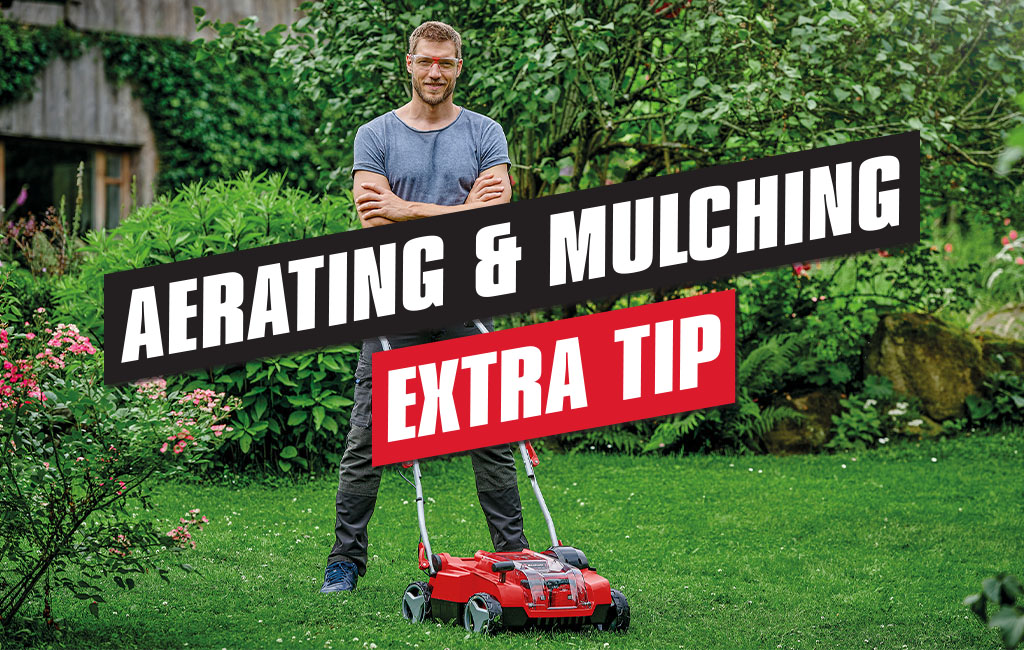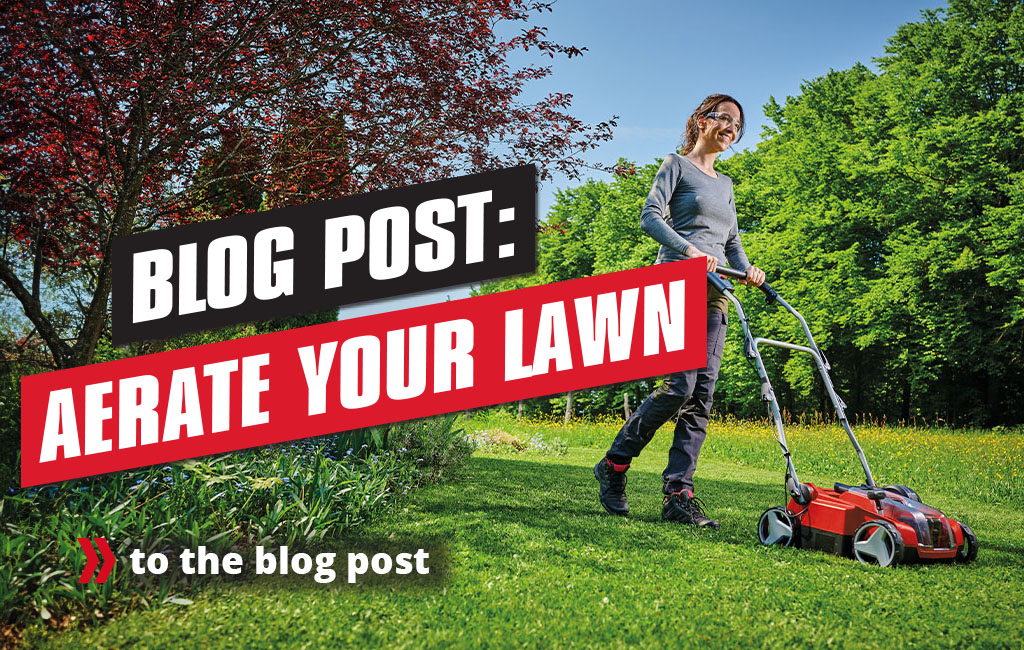Safe Mowing on a Slope: How to Master Steep Lawns
Mowing the Lawn: For some, it's meditative garden work, for others, an unpopular necessity. However, this often depends not on the task itself, but on one's own garden. For many meadow and garden owners, mowing on a slope presents a particular challenge, especially when it comes to very steep lawns or embankments along the roadside. Areas with a lot of inclines not only require special caution, but also the right equipment and technique to ensure safe and effective lawn mowing.
In this blog post, you will learn important tips on how and with which garden tools you can safely mow even on slopes. Whether cordless lawnmowers, brush cutters, or grass trimmers – we show you how to use each device optimally. This way, you can master difficult slopes like a true garden professional.
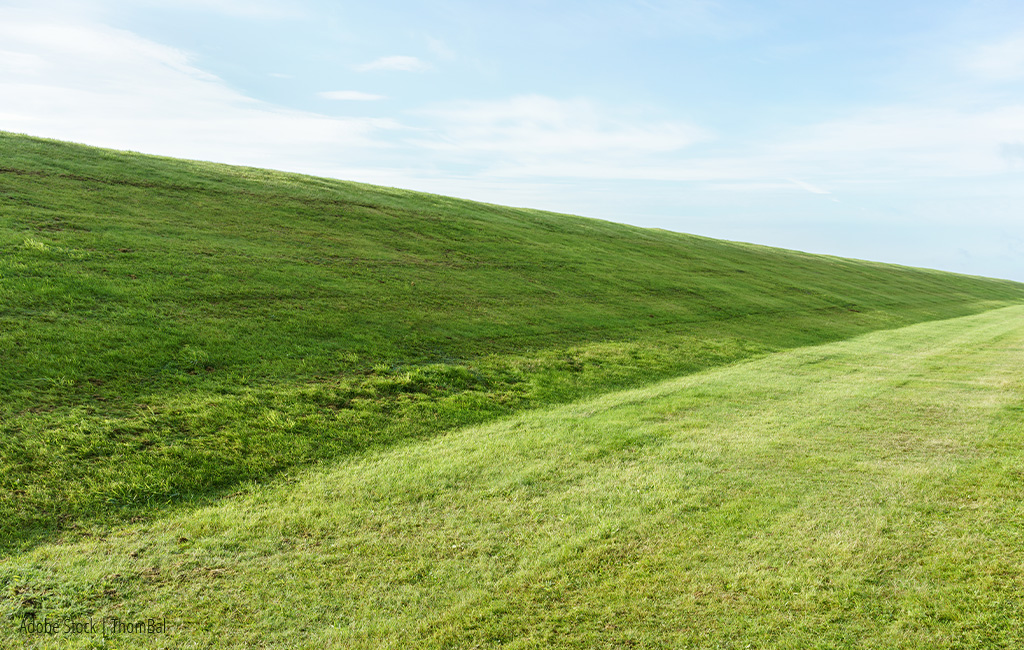
What to Pay Attention to on Lawns with a Strong Incline
Mowing grass on a slope carries a higher risk of injury compared to working on flat lawns. Therefore, you should always proceed with special caution and careful planning. The direction in which you should mow always depends on the equipment you are using. With many mowers, it is better to work across the slope to avoid slipping and ensure stability. With other machines, such as ride-on mowers, it is safer to move along the slope, that is, up and down, as there is less risk of tipping. When mowing, you should always work calmly and focused, not only to achieve clean results but also to minimize the risk of injury. We will show you how to proceed exactly and provide specific tips for the various mowing devices.
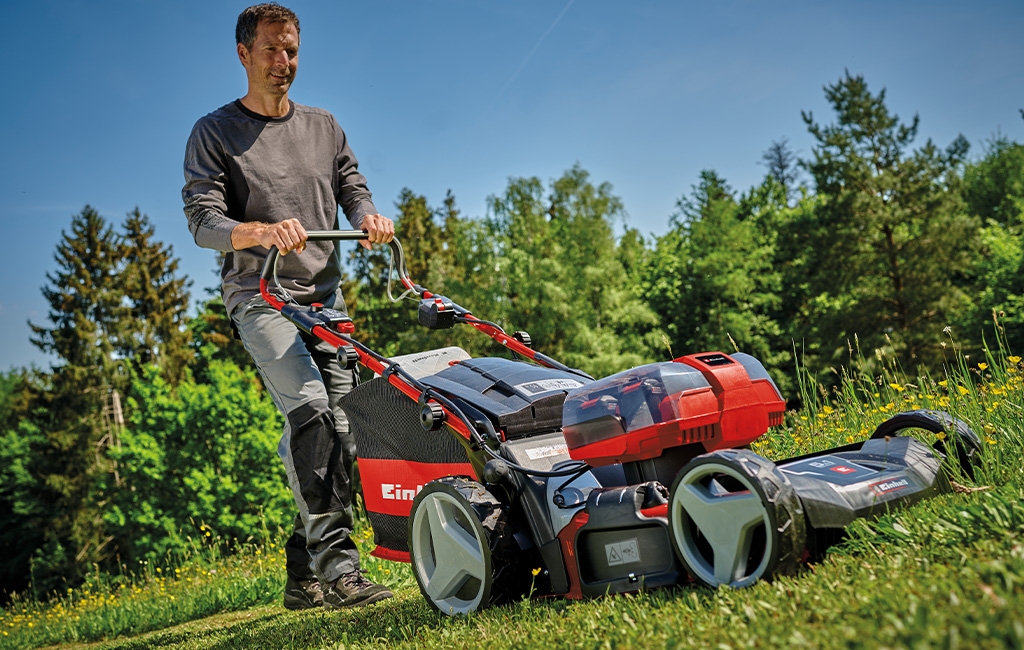
Good Preparation: Checking Slope, Lawn Area, and Equipment
To optimally prepare for mowing on a slope, there are several important steps to consider:
- Determine the slope: Use your smartphone with an app to measure the slope angle to find out the exact incline of the slope. Additionally, you can easily calculate the slope using a simple formula.
- Examine soil conditions: Check if the ground is even and firm or rather soft, yielding, and possibly hilly.
- Check the condition of the lawn area: Is the grass dry or wet? Wet grass can be slippery and pose a higher risk of accidents. Is it a typical lawn or is the area covered with very high shrubbery and thicket?
- Clear the lawn area: Remove all objects and movable obstacles from the lawn area so that you can work unhindered with the mower.
- Inspect mowing equipment: Is the lawnmower ready for use? Are the blades sharp and intact? Are the blades or string of your brush cutter in good condition? Is the battery charged or the fuel tank filled?
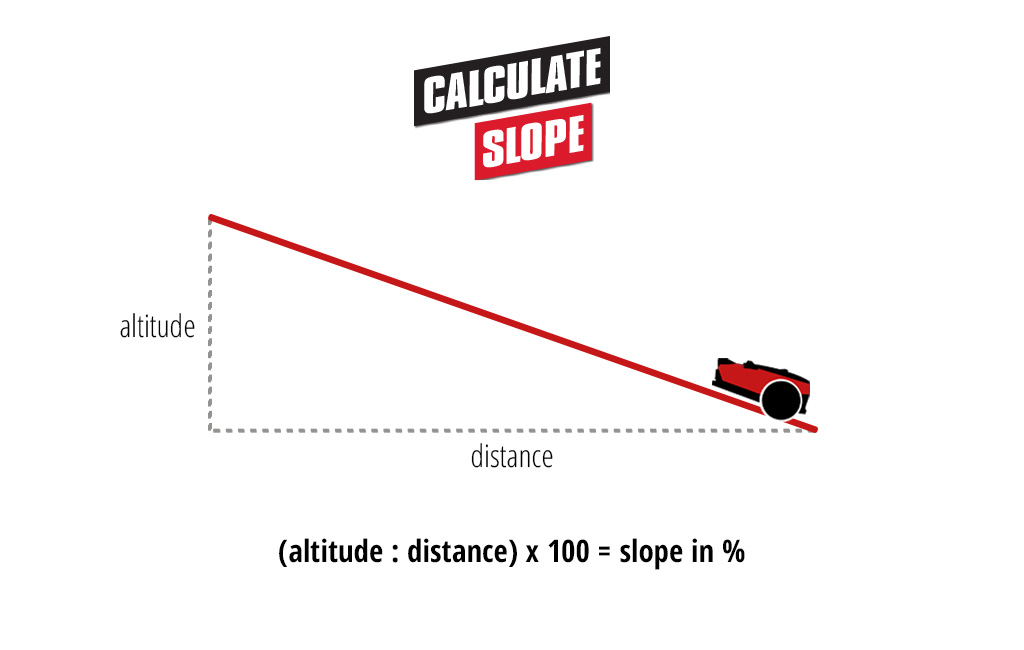
Calculating the Slope
With this formula, you can easily calculate the slope or incline. This way, you can be sure whether your robotic mower or cordless lawnmower is still suitable for your slope, or if you need to switch to another mower.
Knowing the exact slope, the ground conditions, and the state of the lawn makes it easier for you to choose the most suitable device for mowing. Generally, you should only perform mowing work on embankments and slopes in dry weather. Wet grass can quickly become slippery and make it difficult for you to control the mower. To avoid injuries, you should therefore ensure the ground is dry. On very hilly or yielding soil, conventional lawnmowers are difficult to manoeuvre. In such cases, using a trimmer or scythe is advisable. Additionally, the steeper the slope, the more strenuous the work will be, especially with heavy equipment. Moreover, not every mower is suitable for every incline: always pay attention to the corresponding instructions in the user manual.
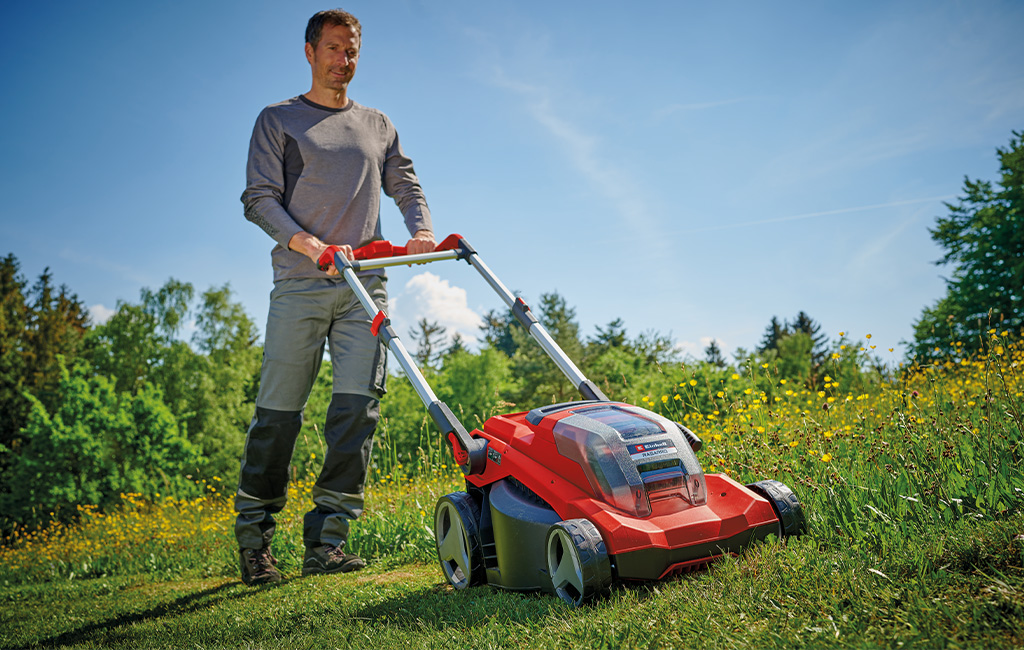
Which Device is Suitable for Which Area?
When mowing on a slope, choosing the right device is crucial to complete the task safely and effectively. Depending on the size of the lawn area, the incline, the height, and the type of mowing material, different devices are suitable.
- Areas with a slight incline: For smaller lawn areas with a slight incline, classic lawnmowers like our battery-powered lawnmowers are suitable. These devices are lightweight and manoeuvrable, making mowing on a slope easier. If the slope is less than 35%, you can use a FREELEXO robotic mower for fully automatic lawn care. Always check the height of the grass before mowing! If the terrain is covered with very tall grass and dense undergrowth, you should initially work with a brush cutter. Another option is using a mulching mower, as it finely chops the mowing material and simultaneously fertilizes the soil.
- Smaller, steep areas: For manageable, steep areas, you can use a grass trimmer or brush cutter. With a trimmer or brush cutter, you are highly mobile and can position yourself safely on the steep slope.
- Large, very steep areas: For huge lawn areas and steep slopes, special machines like a ride-on mower with all-wheel drive, a bar mower, a steep slope mower, or remote-controlled slope mowers are the better choice. These specialized devices offer more stability and safety on uneven terrain with high inclines.
Suitable Garden Tools for Green Maintenance on Slopes
Lawnmowers for Slopes
Classic lawnmowers are particularly suitable for mowing lawn areas on slopes, especially for smaller to medium-sized areas. The low weight of cordless lawnmowers and their easy handling make manoeuvring on sloped terrain easier. To reduce the strenuous work, an integrated wheel drive can be beneficial. When mowing with a lawnmower on a slope, you should always mow across the slope to minimize the risk of slipping. Work your way up the slope in horizontal paths from bottom to top. When changing paths, always turn the mower towards the slope to prevent it from pulling downhill and losing control. It is even safer if you do not push the lawnmower directly in front of you but position yourself slightly lower behind the push bar and lean towards the slope.
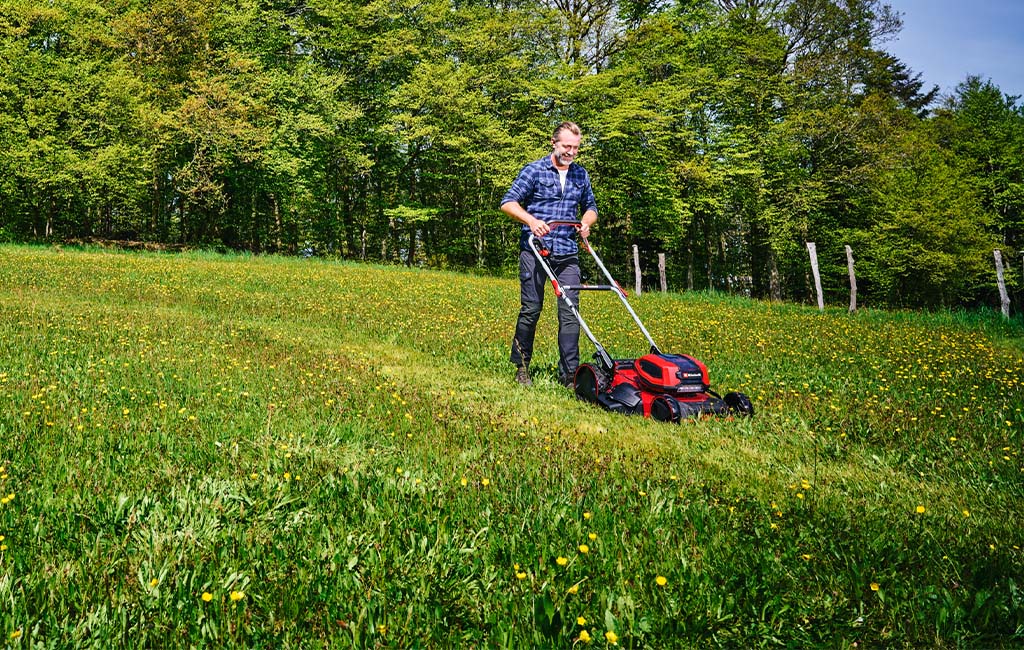
Robotic Mowers for Moderate Inclines
Are you looking for the most convenient solution for maintaining sloping lawns? Then a FREELEXO robotic mower might be the ideal option for you. Depending on the model, these mowers can handle inclines of 25% or 35%. Therefore, it's essential to determine the exact slope of your lawn beforehand. The robotic mowers operate fully automatically, regularly ensuring that your lawn looks well-maintained without any manual effort on your part. However, it's important to note that for tall grass, preliminary work with a lawnmower, trimmer, or scythe may be necessary to allow the robotic mower to work effectively.
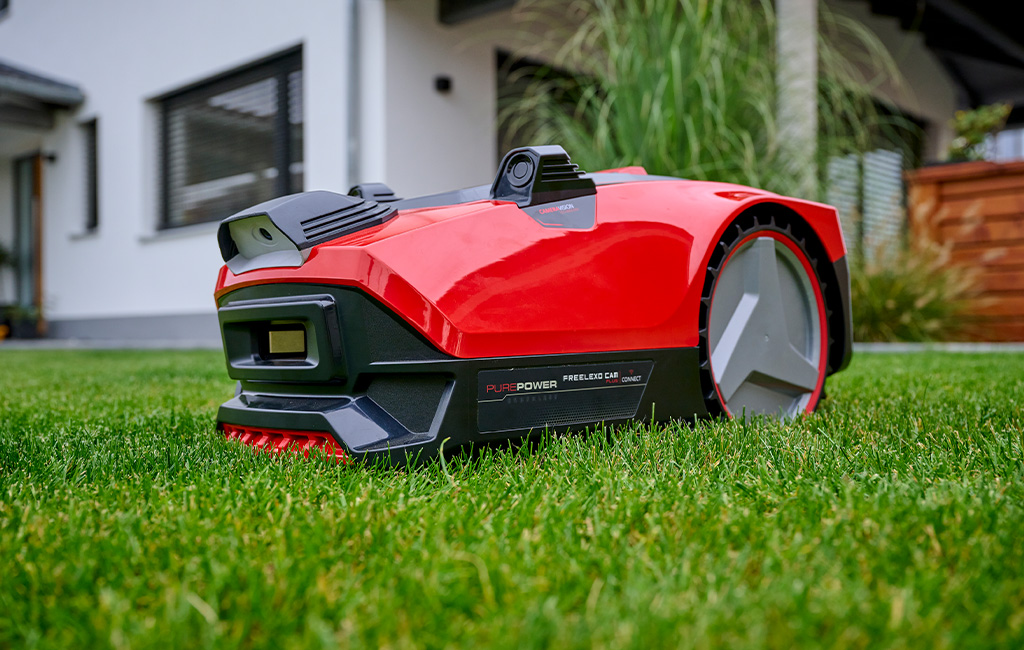
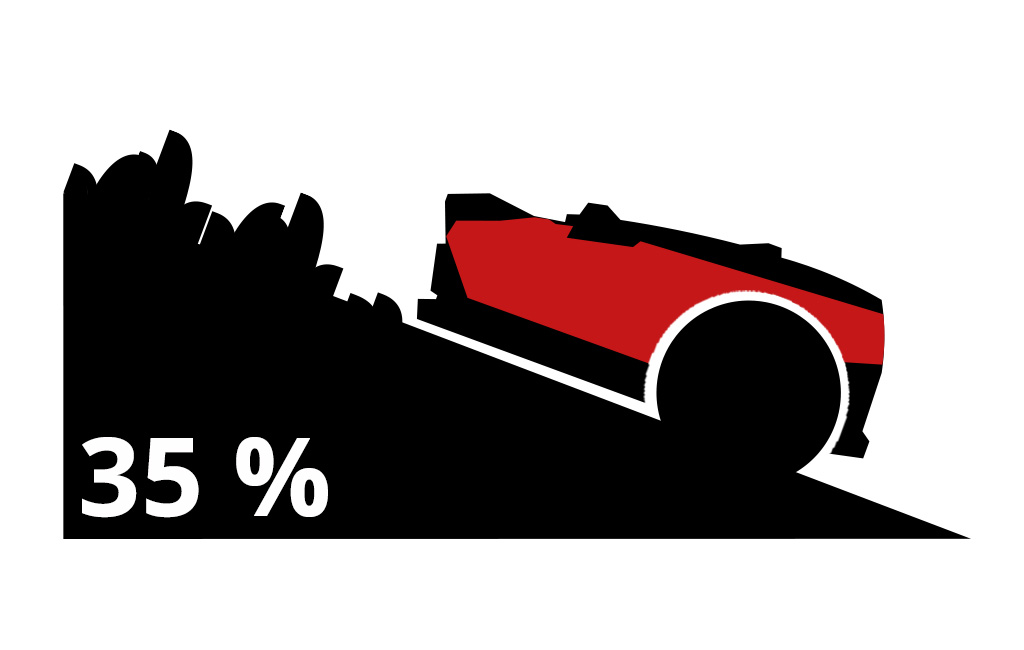
Grass Trimmers for Steep Gardens
When it comes to mowing steeply sloping green areas, grass trimmers are a particularly compact and practical solution. They are ideal for mowing regular lawns and grass along steeper slopes. The lightweight design and high manoeuvrability make our cordless grass trimmers perfect for use on uneven terrain. Depending on the model, they are equipped with plastic blades or a string to ensure efficient cutting performance. With a grass trimmer, you can work precisely and easily reach difficult-to-access areas. If you choose a model with an integrated flower guard, you can even work along your rock garden without damaging the planted flowers.
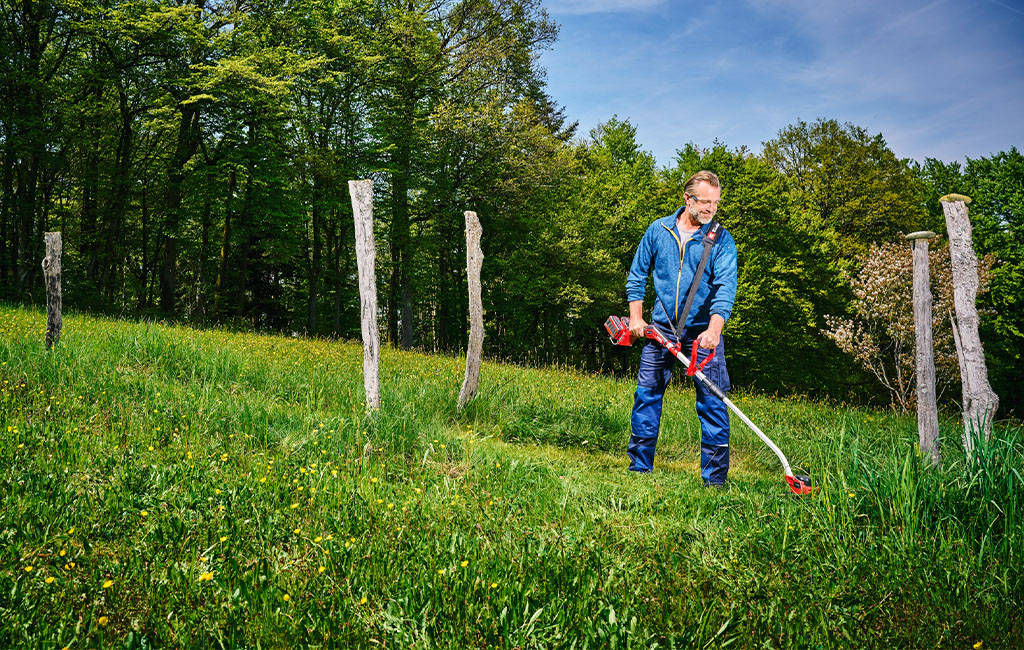

Brush Cutters for Embankments and Thickets
If you want to mow meadows and steep slopes, brush cutters are an excellent choice. The Einhell cordless power scythes are specifically designed to efficiently cut tall grass, thickets, and undergrowth. Their manoeuvrability allows you to work in hard-to-reach places and along steep embankments. Depending on the model, they are equipped with a sturdy metal blade, a string, or both, to handle all challenges. With the integrated backpack carrying strap and large two-hand grip, you can control the brush cutter and tackle larger, difficult-to-mow areas.
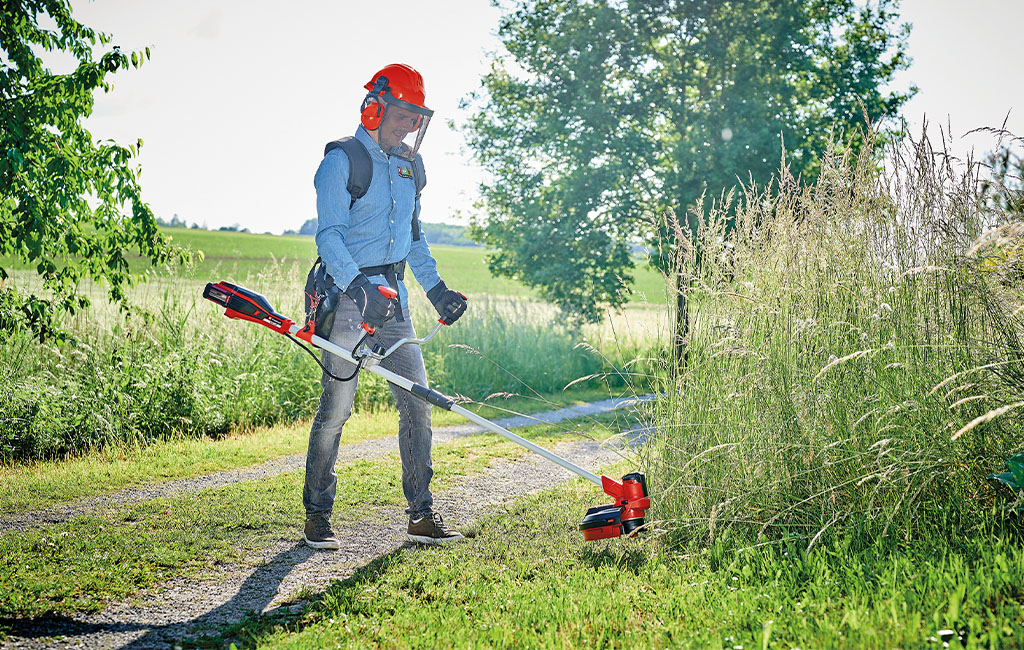

Proper Care for Sloped Lawns
Does the grass in your hillside garden look unhealthy and scorched? This often happens with steep lawns, slopes, and embankments, as the soil on sloping terrain naturally absorbs fewer nutrients and water because they are washed away more quickly. The rapid run-off of water reduces the time the soil has to absorb precipitation, resulting in less water for the plants and grassroots. In addition to increased erosion risk, slopes also tend to have lower soil density, which further impairs water retention and nutrient absorption.
However, you can support your lawn on steep terrain with regular care. Regular mulching can help significantly, and you can learn how to do it in our blog post on lawn mulching. Also, check out our articles on lawn scarifying and aerating to find out how to support your lawn in nutrient absorption.





